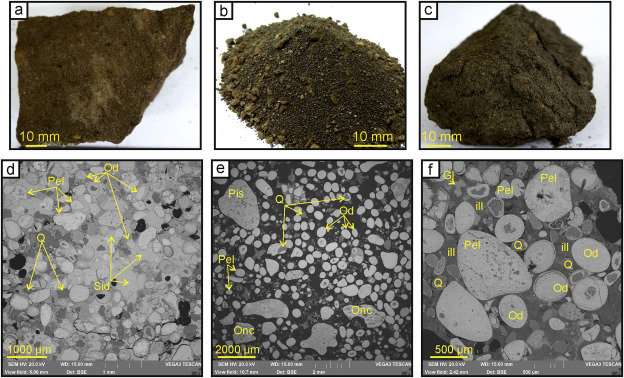Huge reserves of iron in Western Siberia might originate from under an ancient sea

The world's largest Bakchar iron ore deposit is located in an ancient sea in West Siberia, Russia. Its proven reserves are over 28 billion tons. Scientists seek to explain the accumulation of such a huge amount of iron. Now, they have proposed the upward migration of a mixture of Fe-rich brine and hydrothermal fluid through marine sediments as the origin of the Bakchar ironstone deposit.
Scientists from Tomsk Polytechnic University and colleagues from the Indian Institute of Technology Bombay have refuted a widespread theory that iron in such deposits originated from eroded mountainous areas of ancient continents. According to their article, published in the journal Marine and Petroleum Geology, they originate from emissions of solutions containing iron breaking through the seabed.
Ninety-five million years ago, there was a shallow warm sea in West Siberia. The Bakchar ironstone deposit is considered the most promising in the West Siberia iron ore basin, which is in turn world's largest deposit. However, to date, there is no ore mining at the deposit.
Prof. Maksim Rudmin from the TPU Geology Department, a co-author of the article, says, "This geological site is truly unique by scale. The oolit iron deposits were formed 90 to 56 million years ago within the ancient sea in quiet seashore conditions. The most common theory claims that iron was transported into the sea by the erosion of ancient mountainous areas into river systems. A careful study of the geological situation and ore samples from the deposit allows us to disagree with it."
The scientists argue that there are no traces of giant sources of iron in regions that were eroded during the period when the deposit was formed. Secondly, no major intermediate deposits were found in the areas of ancient rivers that should have transported iron according to the theory. Thirdly, the coastline of the ancient sea repeatedly shifted while the Bakchar deposit was formed at a certain location, though its borders also had to shift and stretch.
Rudmin says, "These are just some counterarguments. We believe that a promising candidate is the deep parts of the sediment basin. That is, the source of the iron could be under the deposit itself. Firstly, in the ore we found iron, lead, zinc, silver, copper sulphides, mineral forms of arsenic, mercury and barium sulphates, which are closely associated with iron-containing minerals. These minerals are not stable, and river water could not bring them, as they would dissolve during such transport. Secondly, we identified the features of distribution and relationship of a number of rare metals, for example, nickel, cobalt, lead, zinc, copper, molybdenum, arsenic and vanadium, which are observed in other marine ferrous sediments, exposed to emissions of hydrothermal solutions through sea or ocean bed."
In addition, the researchers found the inclusion of methane bubbles in the ore. In their opinion, this could occur if there were upward methane fluxes from the bottom through the sediments.
"It is possible that different elements, including iron, could have come together with methane and water. Thus, in the ore samples, we found mineral forms of metals that accompany ore accumulation, i.e. lead and zinc sulfides (galena and wurtzite), lead selenide (claustite), cobalt and nickel arsenide and others. Their origin is beyond doubt. They got in the ore via the emission of gas-liquid fluids from the underlying layers," says Maksim Rudmin.
If further research of the West Siberian Iron Ore Basin confirms the theory of the TPU scientists, this will make it possible to take a fresh look at the exploration methods both for similar iron deposits and genetically related minerals. These include, for example, lead and zinc deposits that are significant for industry.
More information: Maxim Rudmin et al, Origin of ooidal ironstones in relation to warming events: Cretaceous-Eocene Bakchar deposit, south-east Western Siberia, Marine and Petroleum Geology (2018). DOI: 10.1016/j.marpetgeo.2018.11.023
Provided by Tomsk Polytechnic University




















